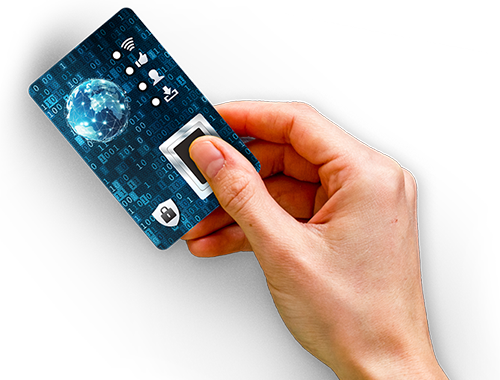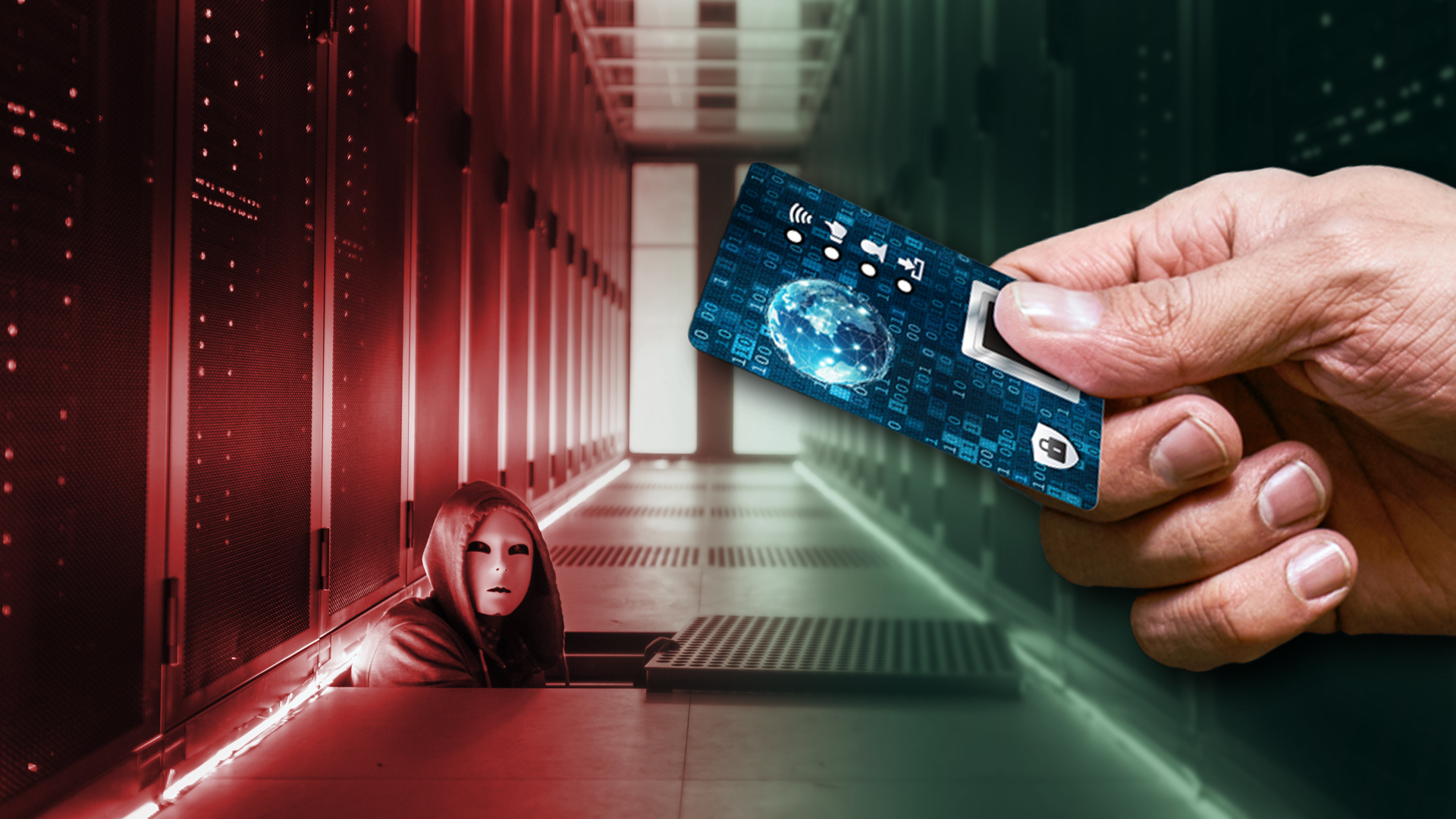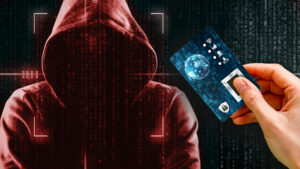- State of the world
- Security Systems — The Fundamentals
- Why Decentralization Changes Everything
- Biometric System-on-Card — The Secure Alternative
- A Proven Technology — Now Perfected
- Real-World Impact — Preventing Crime by Design
- A Future Built on Trust
- Frequently asked questions
How decentralization removes central databases and communication lines attackers targets, restoring integrity and control to the user.
Decentralized Biometrics — The Future of Secure Access
How Decentralization Stops Identity Theft, Fraud, and Insider Misuse Before They Start
State of the World
The financial damage caused by cybercrime is estimated at 1% of world GDP. Artificial Intelligence has made digital crime smarter, faster, and harder to trace. Deepfakes, identity spoofing, and credential phishing have become significantly more sophisticated and are now accessible even to non-experts. As cybercrime grows exponentially, the protection of physical and digital assets has never been more critical.
Most organizations deploy various variants of multi-factor authentication (MFA) for access control, yet these systems remain vulnerable. Passwords and PINs can be phished, devices can be cloned or stolen, and even biometric data—if stored in a centralized database—can be compromised and sold on the dark web. Cybercriminals will find and exploit your weakest links.
True security requires one thing above all: a verifiable and unforgeable link between identity and action.
Security Systems — The Fundamentals
Every authentication system, no matter how complex, relies on one or more of the following pillars:
- Possession: something you have (a key, token, or smart card)
- Knowledge: something you know (a password or PIN)
- Biometrics: someone you are (your fingerprint, face, or voice)
The first two are easily shared or stolen. Only biometrics can create a true personal binding — a proof of presence that cannot be transferred or faked. But even biometrics must be implemented correctly to be safe and secure.
The Biometric Challenge
A biometric system collects, processes, and compares your physical or behavioral characteristics to verify identity. The challenge lies in where and how this sensitive data is collected, stored and compared.
In centralized systems, thousands or even millions of biometric templates are stored in external servers. A single breach can expose the biometric identities of an entire user population — something that cannot be “reset”. Examples are plentiful: hacked facial databases and stolen fingerprint archives have and will be exploited by criminal organisations and hostile nations.
Why Decentralization Changes Everything
A decentralized biometric architecture stores biometric reference data and compares it with biometric proof data directly on a secure personal device — a smart card. In this case, the architecture is called on-card biometric comparison. The data never leaves the card, and no centralized database exists for attackers to exploit.
This eliminates some of the most common and dangerous crimes:
- Identity theft and impersonation: Since the biometric reference data and the biometric proof data never leaves the card, it cannot be copied or used to impersonate someone remotely.
- Insider attacks: Even administrators or system operators cannot access or misuse biometric data, as it remains sealed within each card.
- Database breaches: There’s no central repository for hackers to target — no single point of concentrated sensitive data (and high-value target).
- Replay and cloning attacks: Every biometric verification occurs locally on the card. It accepts only biometric proofs from a trusted source, ensuring that fake or recorded data cannot be reused.
- Coercion or misuse: Decentralized systems can include tamper detection and presentation attack detection, making it impossible to activate the card under duress or with an artificial fingerprint.
In short, on-card biometric comparison improves privacy for the individual, and eliminates large-scale risk.
Biometric System-on-Card — The Secure Alternative
Modern Biometric System-on-Card (BSoC) technology takes decentralization even further. It embeds not just the storage and comparison functions, but also the biometric capture and processing directly inside the card itself.
This means:
- Your fingerprint never leaves your card, both during enrollment and verification.
- Your biometric data is never shared with a reader, a network, or a cloud service.
- The decision to grant access is made by the card’s secure element — not by an external device.
In short, BSoC technology restores full control to the individual, prevents even sophisticated attacks, and builds trust between user and system.
Beyond the privacy advantage, this also eliminates hygiene concerns: users no longer have to touch shared sensors that hundreds of others may have used before.
A Proven Technology — Now Perfected
On-card biometric comparison has existed for over two decades. In recent years, multiple BSoC products have been launched by leading manufacturers. However, many commercial implementations have prioritized convenience and cost over security, using small sensors and proprietary algorithms suitable for payment cards but inadequate for high-security applications. Using small fingerprint sensors can result in no overlap between biometric probe and biometric reference, even when collecting 10 or 20 samples during enrollment. The resulting error rates of convenience products are not sufficient for protecting critical assets or classified environments.
APPSCARD decided to take a different path. By integrating government-grade biometric technology — a FAP10 category fingerprint sensor and a certified algorithm — into a fully decentralized Biometric System-on-Card platform, we created a device trusted for defense, research, and enterprise-grade security. A biometric system that can be made mandatory in populations — reaching critical mass of a trusted system.
Key advantages:
- Certified components and supervised enrollment ensure authenticity from day one.
- JavaCard compliance allows organizations to deploy their own custom applications on the same trusted platform.
- No network dependency — works securely even in isolated environments.
- Unmatched privacy — your biometric identity never leaves your hand.
Real-World Impact — Preventing Crime by Design
A few examples of decentralization impacts:
- Corporate assets theft: A rogue contractor can’t steal access credentials or biometric templates to gain entry to restricted assets — each card is cryptographically sealed and bound to one person only.
- Illegitimate access to critical infrastructure: Operators in security sensitive contexts can’t be impersonated, even by insiders with privileged system access.
- Device theft: A stolen card or fake fingerprint is useless without the genuine biometric match stored and verified inside the card.
- Compromise and misuse of healthcare and citizen data: Attackers cannot access data stored in the BSoC. Personal health records or government services tied to decentralized biometric credentials remain private, secure, and compliant with world privacy concerns and data protection laws enforced in many nations.
In every case, crime is stopped not by detection — but by prevention.
A Future Built on Trust
The Biometric System-on-Card is more than a product — it’s a shift in philosophy. It replaces centralized control with personal sovereignty, replacing risk with trust. APPSCARD brings this future to your fingertips — literally.
When identity truly matters, decentralization is not just an option. It’s the only secure choice.
Dr Robert Muller / APPSCARD Group





